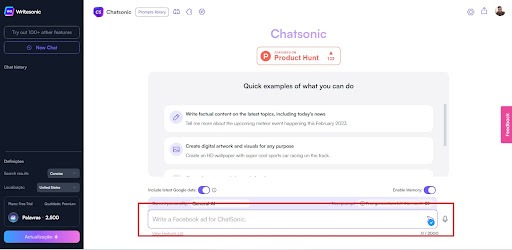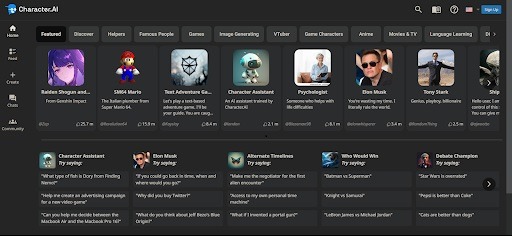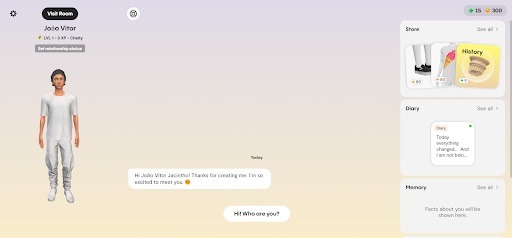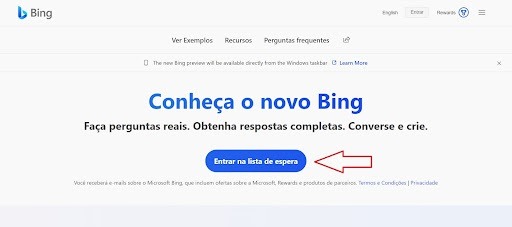Alternatives to ChatGPT: Top 10
The use of ChatGPT has become more and more frequent all over the world, which has driven the search for other tools that offer artificial intelligence as alternatives to ChatGPT. This growing popularity not only benefits the platform itself but also stimulates the creation of new systems, websites, and applications.
Despite having become the most popular in this segment today, ChatGPT is not the only service that proposes the interaction of a robot with the user through a chat. Among the options available on the market, YouChat, ChatSonic, and Jasper stand out.
Therefore, in this article, you will learn about some great alternatives to ChatGPT, the main characteristics of each one of them, and what makes each platform stand out. Some of the options are still in the testing phase and will soon be available on the market, while others have been in full operation for some time.
If you are already a ChatGPT user, also learn how to earn money using this tool and also the difference between the paid and free versions and the best extensions for ChatGPT.
What are ChatGPT’s competitors?
The enormous growth of ChatGPT made big technology companies need to get ahead of the artificial intelligence market. Thus, Google Bard and the new Microsoft Bing, for example, are running out of time to be launched.
In addition, OpenAI itself has other platforms similar to ChatGPT, which includes several customizations, so that users who have more experience in using the tool have more possibilities. One of the examples of this model is the OpenAI Playground, which will be the first service we will look at in our list of the alternatives to ChatGPT.
1. OpenAI Playground GPT-3
An alternative to ChatGPT is OpenAI Playground, also known as GPT-3. Despite being less practical for daily use, it has advanced features, even allowing the choice of language in which to search for information.
In addition, when using OpenAI Playground, the user can access a series of interesting customizations. Therefore, it is a platform commonly used by those who already have some experience with this type of artificial intelligence and need more personalized functions, which makes its use more complex.
2. ChatSonic

ChatSonic is one of the main competitors of ChatGPT. This is because it offers more up-to-date information than its competitor, as its data is integrated with Google and the internet in general.
One of ChatSonic’s differentials is that the robot that generates the information can be customized. In this case, it is possible to choose, for example, that the machine behaves like a comedian, a poet, or even a coach if you wish.
3. DialoGPT
In addition to the Microsoft Bing update, Bill Gates’ tech giant is developing another ChatGPT alternative, DialoGPT. It had its launch at the end of 2019 and has features similar to the current GPT-2.
The DialoGPT code is available on GitHub and its operation is based on around 147 million conversations that were taken from Reddit, a free online forum that allows discussions of the most diverse subjects. Therefore, this is one of the most important alternatives to ChatGPT.
4. Character AI

Character AI has a different proposal from ChatGPT. In this case, the similarity lies in the possibility of talking to a robot through a chat, like a chat tool.
However, Character AI creates characters that behave according to the personality of well-known and famous people. Thus, it is possible to talk to a robot that behaves like a certain politician, philosopher, celebrity and even some fictional character.
When choosing a profile, such as that of Elon Musk, for example, the questions and comments made to the chat will cause the artificial intelligence to give answers simulating what the founder of Tesla would answer, which includes the way he speaks, “buzzwords” and his typical phrases.
5. Jasper Chat
Jasper Chat is one of the great alternatives to ChatGPT, emphasizing its simplicity and ease of use. With this tool, the user can not only have new ideas about certain content but also revise it, all through artificial intelligence.
Among the many features that Jasper Chat offers, one of them is its vast knowledge of several more advanced topics, extracting information from various contents, such as videos and articles, to create your own material.
Despite this, it is worth mentioning that the information on the platform is updated until the year 2021. Thus, specific topics that are related to the present day may not be obtained very accurately, which can be a disadvantage in some cases.
6. YouChat
Following our list of the best alternatives to ChatGPT is YouChat. Although it is still in the testing phase, and it is necessary to evaluate the responses that the tool’s artificial intelligence brings to users, YouChat is a platform that has many similarities to ChatGPT.
However, one of the main differences is the fact that YouChat has internet access, associated with the “You.com” search engine. With this platform, it is possible to create fully updated content, templates, and texts.
Also, another difference between ChatGPT and YouChat is the fact that the second option does not require registration.
Did you know that there is a paid version of ChatGPT? Check out our article that shows the main differences between the free and paid versions of the tool.
7. Replika

Many artificial intelligence chats propose a conversation with a robot that represents another person. The Replika application, in turn, comes with a different premise, in which users can create their own “clone” of themselves on the internet and interact with other replicas of real people.
Thus, through artificial intelligence techniques, Replika seeks to obtain information about its user, such as the way of writing, for example, and later create a character that behaves as a kind of clone of that person, who will talk and exchange interactions with other “clones” in the app.
If you are interested in learning about other artificial intelligence tools, we have an article explaining details on this topic. Check it out by clicking here.
8. Perplexity AI
Perplexity AI is a platform with the potential to be a thorn on Google’s side. That’s because it works like a search tool, but uses artificial intelligence to generate information and answers.
Thus, instead of the results pointing to altenative sites where it is possible to find the information, as Google does, Perplexity AI brings more specific answers that in fact intend to answer the questions more precisely, citing the internet sources that were used to prepare the response. Hence, Perplexity AI is also on our list of the ChatGPT alternatives.
9. Google Bard
Many say that ChatGPT could be one of the threats to Google’s hegemony in internet search services. However, Google is not far behind when it comes to artificial intelligence.
The tech giant has developed Google Bard, an artificial intelligence-based chat service that is still in the experimental phase. With a new update, the platform started to bring data and information consistent with the current context, having the potential to be one of the main alternatives to ChatGPT.
Despite this, the platform will be released to the general public soon, and it will not be possible to use it at this time. The company did not intend to launch Google Bard at that time, but due to the success of ChatGPT, it needed to speed things along to put its service on the market and gain space among users in this segment.
10. Microsoft Bing (new version)
The last tool on our list is not really a ChatGPT alternative, but a partner company. We’re talking about Microsoft, with the MS Bing update. The search service uses an updated version of ChatGPT, called the “Prometheus model”.
It is important to remember that Microsoft recently announced that it invested about US$ 10 billion in OpenAI. Thus, Bill Gates’ company comes with everything to be one of ChatGPT’s partners.
It is still not possible to use the new Bing with all its features of contextualized answers according to the user’s demand. However, it is possible to join the waiting list and be one of the first to use the service.
To join the waiting list for the new Microsoft Bing with artificial intelligence, just go to the website and click on “Join the waiting list”.

As seen, it is possible to have other alternatives to ChatGPT, if the user wants to use other platforms. Even for those who do not give up the OpenAI platform, these options can be used when the ChatGPT page is offline or unusable.





